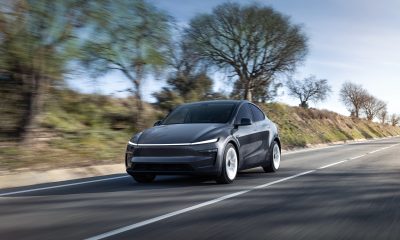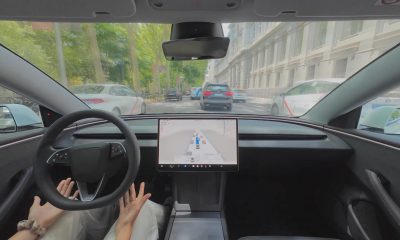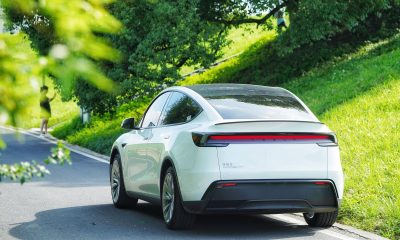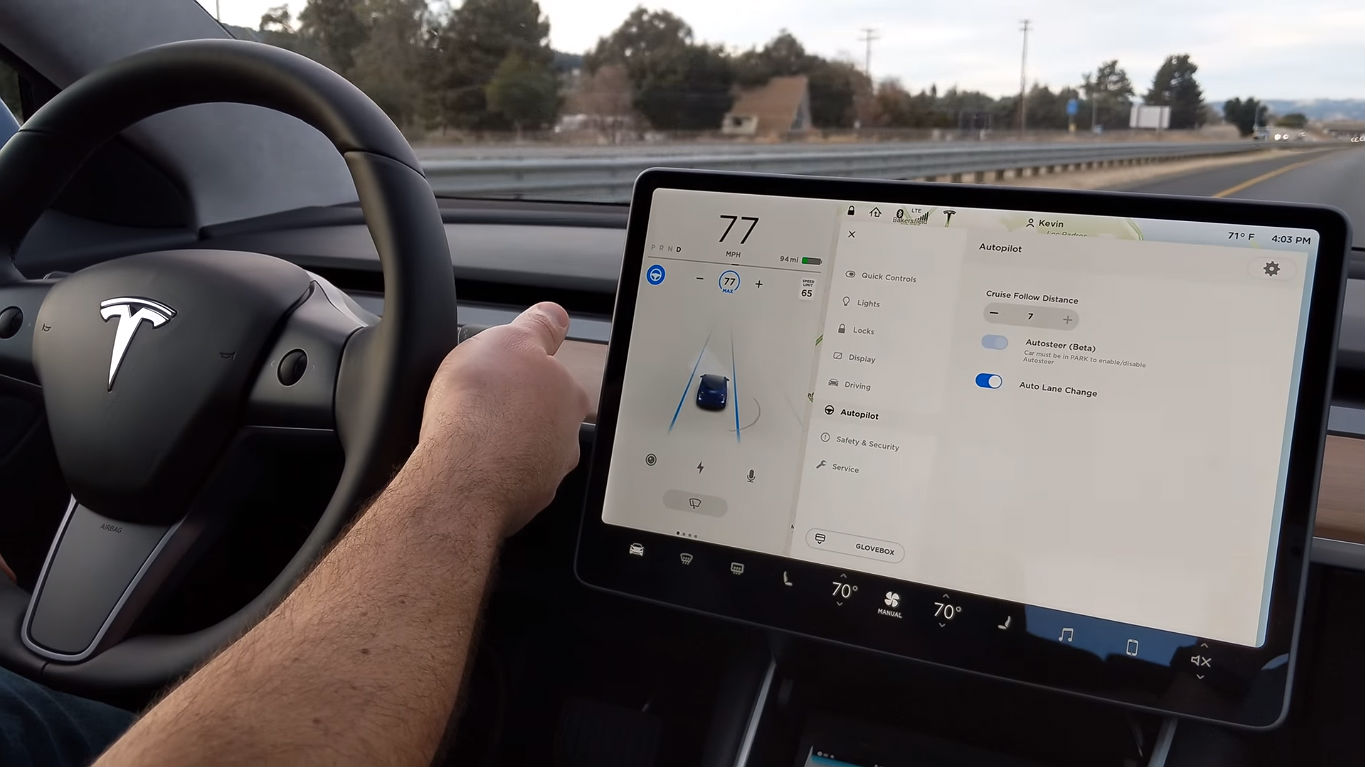

Investor's Corner
Why Tesla Autopilot will ultimately prove the self-driving industry leader
Tesla took an early lead in the race to develop vehicle autonomy, and its Autopilot system remains the state of the art. However, the technology is advancing more slowly than the company predicted – Elon Musk promised a coast-to-coast driverless demo run for 2018, and we’re still waiting. Meanwhile, competitors are hard at work on their own autonomy tech – GM’s Super Cruise, is now available on the CT6 luxury sedan.
Is Tesla in danger of falling behind in the self-driving race? Trent Eady, writing in Medium, takes a detailed look at the company’s Autopilot technology, and argues that the California automaker will continue to set the pace.
Every Tesla vehicle produced since October 2016 is equipped with a hardware suite designed for Full Self-Driving, including cameras, radar, ultrasonic sensors and an upgradable onboard computer. Around 150,000 of these “Hardware 2” Teslas are currently on the road, and could theoretically be upgraded to self-driving vehicles via an over-the-air software update.
Above: In its current state, Tesla’s Autopilot requires a hands-on approach (Youtube: Tesla)
Tesla disagrees with most of the other players in the self-driving game on the subject of Lidar, a technology that calculates distances using pulses of infrared laser light. Waymo, Uber and others seem to regard lidar as a necessary component of any self-driving system. However, Tesla’s Hardware 2 sensor suite doesn’t include it, instead relying on radar and optical cameras.
Lidar’s strength is its high spatial precision – it can measure distances much more precisely than current camera technology can (Eady believes that better software could enable cameras to close the gap). Lidar’s weakness is that it functions poorly in bad weather. Heavy rain, snow or fog causes lidar’s laser pulses to refract and scatter. Radar works much better in challenging weather conditions.
According to Eady, the reason that Tesla eschews lidar may be the cost: “Autonomy-grade lidar is prohibitively expensive, so it’s not possible for Tesla to include it in its production cars. As far as I’m aware, no affordable autonomy-grade lidar product has yet been announced. It looks like that is still years away.”
If Elon Musk and his autonomy team are convinced that lidar isn’t necessary, why does everyone else seem so sure that it is? “Lidar has accrued an aura of magic in the popular imagination,” opines Mr. Eady. “It is easier to swallow the new and hard-to-believe idea of self-driving cars if you tell the story that they are largely enabled by a cool, futuristic laser technology…It is harder to swallow the idea that if you plug some regular ol’ cameras into a bunch of deep neural networks, somehow that makes a car capable of driving itself through complicated city streets.”
Those deep neural networks are the real reason that Eady believes Tesla will stay ahead of its competitors in the autonomy field. The flood of data that Tesla is gathering through the sensors of the 150,000 or so existing Hardware 2 vehicles “offers a scale of real-world testing and training that is new in the history of computer science.”
Competitor Waymo has a computer simulation that contains 25,000 virtual cars, and generates data from 8 million miles of simulated driving per day. Tesla’s real-world data is of course vastly more valuable than any simulation data could ever be, and the company uses it to feed deep neural networks, allowing it to continuously improve Autopilot’s capabilities.
A deep neural network is a type of computing system that’s loosely based on the way the human brain is organized (sounds like the kind of AI that Elon Musk is worried about, but we’ll have to trust that Tesla has this under control). Deep neural networks are good at modeling complex non-linear relationships. The more data that’s available to train the network, the better its performance will be.
“Deep neural networks started to gain popularity in 2012, after a deep neural network won the ImageNet Challenge, a computer vision contest focused on image classification,” Eady explains. “For the first time in 2015, a deep neural network slightly outperformed the human benchmark for the ImageNet Challenge…The fact that computers can outperform humans on even some visual tasks is exciting for anyone who wants computers to do things better than humans can. Things like driving.”
By the way, who was the human benchmark who was bested by a machine in the ImageNet Challenge? Andrej Karpathy, who is now Director of AI at Tesla.
===
Note: Article originally published on evannex.com by Charles Morris; Source: Medium
Elon Musk
Tesla analyst issues stern warning to investors: forget Trump-Musk feud
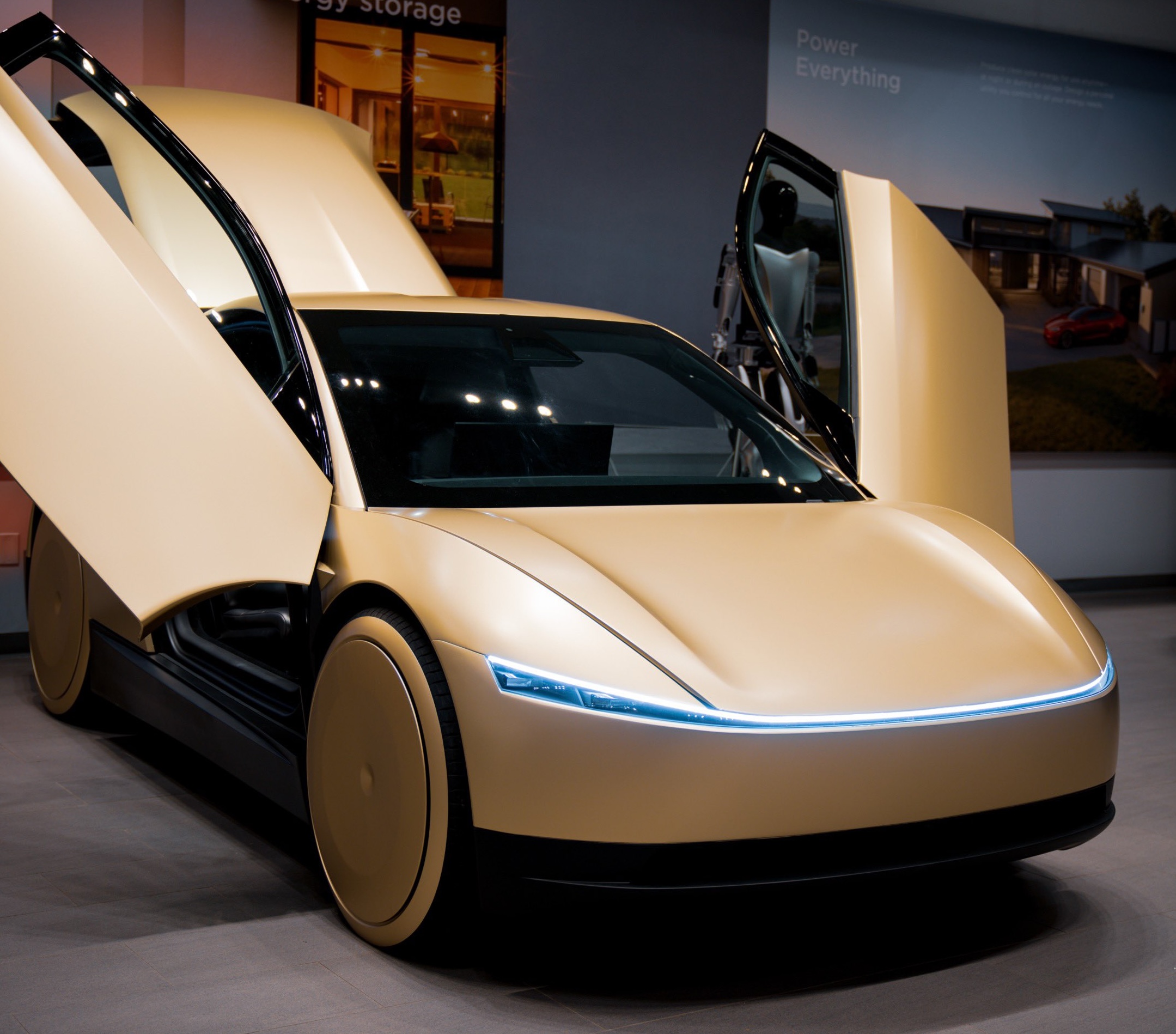
A Tesla analyst today said that investors should not lose sight of what is truly important in the grand scheme of being a shareholder, and that any near-term drama between CEO Elon Musk and U.S. President Donald Trump should not outshine the progress made by the company.
Gene Munster of Deepwater Management said that Tesla’s progress in autonomy is a much larger influence and a significantly bigger part of the company’s story than any disagreement between political policies.
Munster appeared on CNBC‘s “Closing Bell” yesterday to reiterate this point:
“One thing that is critical for Tesla investors to remember is that what’s going on with the business, with autonomy, the progress that they’re making, albeit early, is much bigger than any feud that is going to happen week-to-week between the President and Elon. So, I understand the reaction, but ultimately, I think that cooler heads will prevail. If they don’t, autonomy is still coming, one way or the other.”
BREAKING: GENE MUNSTER SAYS — $TSLA AUTONOMY IS “MUCH BIGGER” THAN ANY FEUD 👀
He says robotaxis are coming regardless ! pic.twitter.com/ytpPcwUTFy
— TheSonOfWalkley (@TheSonOfWalkley) July 2, 2025
This is a point that other analysts like Dan Ives of Wedbush and Cathie Wood of ARK Invest also made yesterday.
On two occasions over the past month, Musk and President Trump have gotten involved in a very public disagreement over the “Big Beautiful Bill,” which officially passed through the Senate yesterday and is making its way to the House of Representatives.
Musk is upset with the spending in the bill, while President Trump continues to reiterate that the Tesla CEO is only frustrated with the removal of an “EV mandate,” which does not exist federally, nor is it something Musk has expressed any frustration with.
In fact, Musk has pushed back against keeping federal subsidies for EVs, as long as gas and oil subsidies are also removed.
Nevertheless, Ives and Wood both said yesterday that they believe the political hardship between Musk and President Trump will pass because both realize the world is a better place with them on the same team.
Munster’s perspective is that, even though Musk’s feud with President Trump could apply near-term pressure to the stock, the company’s progress in autonomy is an indication that, in the long term, Tesla is set up to succeed.
Tesla launched its Robotaxi platform in Austin on June 22 and is expanding access to more members of the public. Austin residents are now reporting that they have been invited to join the program.
Elon Musk
Tesla surges following better-than-expected delivery report
Tesla saw some positive momentum during trading hours as it reported its deliveries for Q2.

Tesla (NASDAQ: TSLA) surged over four percent on Wednesday morning after the company reported better-than-expected deliveries. It was nearly right on consensus estimations, as Wall Street predicted the company would deliver 385,000 cars in Q2.
Tesla reported that it delivered 384,122 vehicles in Q2. Many, including those inside the Tesla community, were anticipating deliveries in the 340,000 to 360,000 range, while Wall Street seemed to get it just right.
Tesla delivers 384,000 vehicles in Q2 2025, deploys 9.6 GWh in energy storage
Despite Tesla meeting consensus estimations, there were real concerns about what the company would report for Q2.
There were reportedly brief pauses in production at Gigafactory Texas during the quarter and the ramp of the new Model Y configuration across the globe were expected to provide headwinds for the EV maker during the quarter.
At noon on the East Coast, Tesla shares were up about 4.5 percent.
It is expected that Tesla will likely equal the number of deliveries it completed in both of the past two years.
It has hovered at the 1.8 million mark since 2023, and it seems it is right on pace to match that once again. Early last year, Tesla said that annual growth would be “notably lower” than expected due to its development of a new vehicle platform, which will enable more affordable models to be offered to the public.
These cars are expected to be unveiled at some point this year, as Tesla said they were “on track” to be produced in the first half of the year. Tesla has yet to unveil these vehicle designs to the public.
Dan Ives of Wedbush said in a note to investors this morning that the company’s rebound in China in June reflects good things to come, especially given the Model Y and its ramp across the world.
He also said that Musk’s commitment to the company and return from politics played a major role in the company’s performance in Q2:
“If Musk continues to lead and remain in the driver’s seat, we believe Tesla is on a path to an accelerated growth path over the coming years with deliveries expected to ramp in the back-half of 2025 following the Model Y refresh cycle.”
Ives maintained his $500 price target and the ‘Outperform’ rating he held on the stock:
“Tesla’s future is in many ways the brightest it’s ever been in our view given autonomous, FSD, robotics, and many other technology innovations now on the horizon with 90% of the valuation being driven by autonomous and robotics over the coming years but Musk needs to focus on driving Tesla and not putting his political views first. We maintain our OUTPERFORM and $500 PT.”
Moving forward, investors will look to see some gradual growth over the next few quarters. At worst, Tesla should look to match 2023 and 2024 full-year delivery figures, which could be beaten if the automaker can offer those affordable models by the end of the year.
Investor's Corner
Tesla delivers 384,000 vehicles in Q2 2025, deploys 9.6 GWh in energy storage
The quarter’s 9.6 GWh energy storage deployment marks one of Tesla’s highest to date.
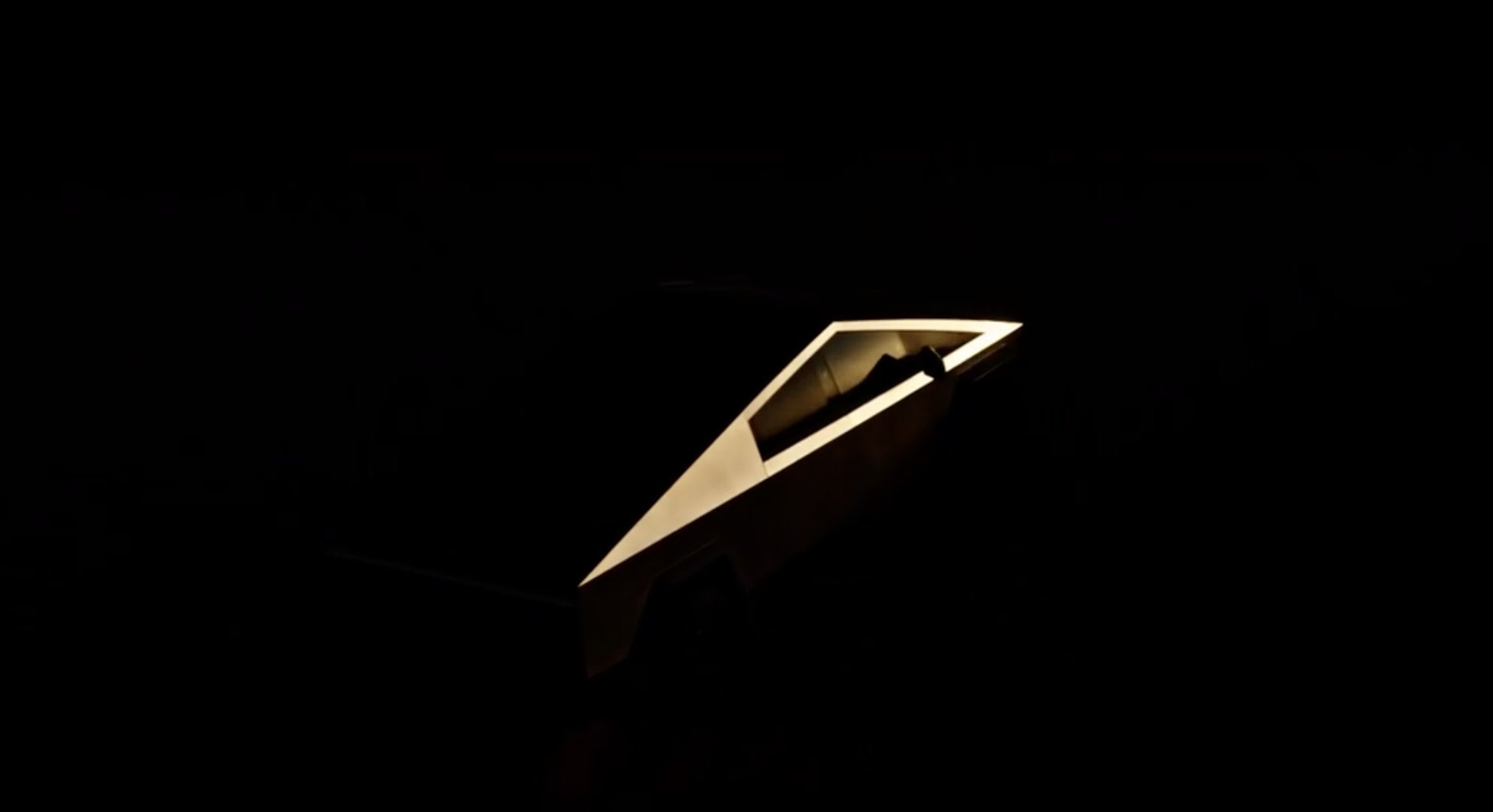
Tesla (NASDAQ: TSLA) has released its Q2 2025 vehicle delivery and production report. As per the report, the company delivered over 384,000 vehicles in the second quarter of 2025, while deploying 9.6 GWh in energy storage. Vehicle production also reached 410,244 units for the quarter.
Model 3/Y dominates output, ahead of earnings call
Of the 410,244 vehicles produced during the quarter, 396,835 were Model 3 and Model Y units, while 13,409 were attributed to Tesla’s other models, which includes the Cybertruck and Model S/X variants. Deliveries followed a similar pattern, with 373,728 Model 3/Ys delivered and 10,394 from other models, totaling 384,122.
The quarter’s 9.6 GWh energy storage deployment marks one of Tesla’s highest to date, signaling continued strength in the Megapack and Powerwall segments.

Year-on-year deliveries edge down, but energy shows resilience
Tesla will share its full Q2 2025 earnings results after the market closes on Wednesday, July 23, 2025, with a live earnings call scheduled for 4:30 p.m. CT / 5:30 p.m. ET. The company will publish its quarterly update at ir.tesla.com, followed by a Q&A webcast featuring company leadership. Executives such as CEO Elon Musk are expected to be in attendance.
Tesla investors are expected to inquire about several of the company’s ongoing projects in the upcoming Q2 2025 earnings call. Expected topics include the new Model Y ramp across the United States, China, and Germany, as well as the ramp of FSD in territories outside the US and China. Questions about the company’s Robotaxi business, as well as the long-referenced but yet to be announced affordable models are also expected.
-

 Elon Musk5 days ago
Elon Musk5 days agoTesla investors will be shocked by Jim Cramer’s latest assessment
-

 News1 week ago
News1 week agoTesla Robotaxi’s biggest challenge seems to be this one thing
-

 Elon Musk2 weeks ago
Elon Musk2 weeks agoFirst Look at Tesla’s Robotaxi App: features, design, and more
-

 News2 weeks ago
News2 weeks agoWatch Tesla’s first driverless public Robotaxi rides in Texas
-

 News2 weeks ago
News2 weeks agoWatch the first true Tesla Robotaxi intervention by safety monitor
-

 Elon Musk2 weeks ago
Elon Musk2 weeks agoTesla to launch in India in July with vehicles already arriving: report
-
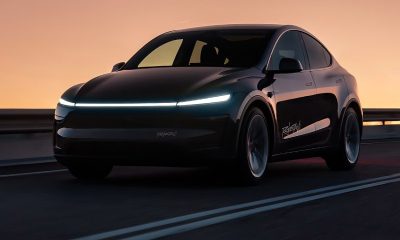
 Elon Musk2 weeks ago
Elon Musk2 weeks agoTesla officially launches Robotaxi service with no driver
-

 Elon Musk1 week ago
Elon Musk1 week agoA Tesla just delivered itself to a customer autonomously, Elon Musk confirms


